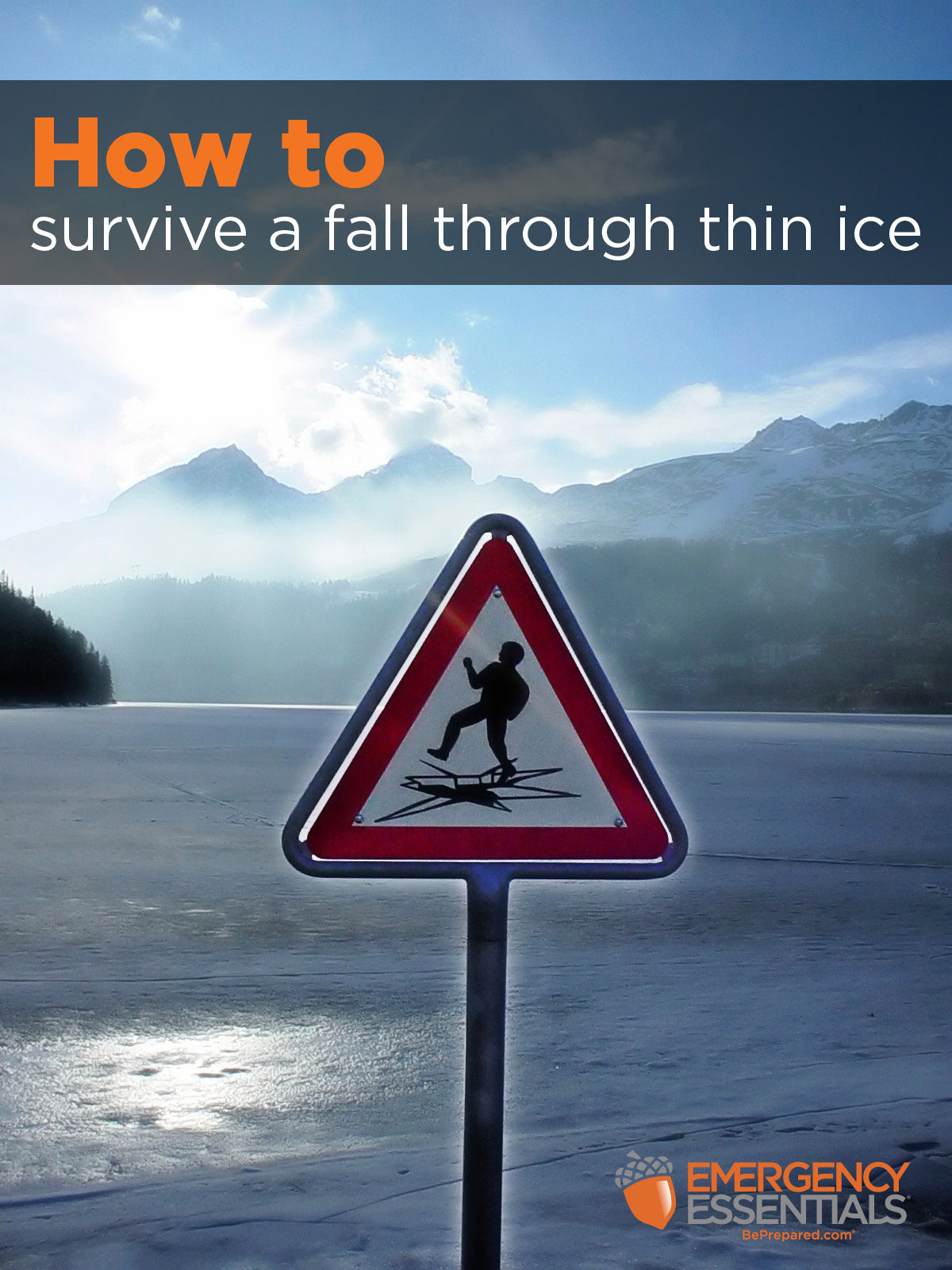In early December, a firefighter rescued a Golden Retriever who had fallen through thin ice into a lake. Linda Park's dog, Dakota, wandered off during one of their usual walks, and he fell through the ice into the frigid water. Dakota grew tired of trying to climb out after a half hour, and a firefighter came to the rescue after a neighbor called 9-1-1.
Capt. Tom Langevin of the Waterboro Fire Department put on a wetsuit, walked 50 feet onto the ice, crawled another 25 feet toward Dakota, and then jumped in to rescue the dog. Watch a video of their story:
Of course, dogs are not the only ones in danger of falling through thin ice. More than 20 people have drowned in the last 10 years after falling through thin ice, more than 50 percent of which are due to failed attempts to rescue dogs or other people. Children are the most at risk; teach kids safety precautions when spending time around frozen bodies of water.
How to Survive a Fall Through Thin Ice
Keep Off The Ice
Of course, the best way to avoid thin ice danger is to stay off frozen water. Venturing onto frozen ice is a bit like playing Russian Roulette, as some individuals will inevitably fall through the ice or become stranded on an icy island. Children are particularly attracted to iced-over lakes and canals for ice-skating opportunities.
Rescuing Someone Else
If a loved one or someone nearby falls through the ice, take the following precautions to ensure you don’t become another casualty.
- Do not attempt to go out onto the ice yourself.
- Call emergency services for assistance.
- Instruct them to keep still to maintain heat and energy, and to anchor themselves to the edge of the ice to help them stay afloat. This can be done with safety spikes, a car key, or another sharp object they may have in their pocket, like a nail file or a pocket knife.
- Throw or reach out with a rope, pole, branch, or item of clothing. While lying down or getting someone to hold onto you, attempt to pull the person to shore.
- If these or a similar item is unavailable, try to Replace something that will float to throw or push out to them to keep them afloat until assistance arrives.
- Continue to reassure and keep them talking until help arrives.
- If the rescue is successful, they will need to be kept warm and treated for shock. They should be taken to hospital even if they appear to be unaffected by their ordeal.
Rescuing Yourself
- Carry a spud bar or walking stick to probe for thin areas and to use for additional traction and balance over slippery areas.
- Carry safety spikes to help you stay afloat and climb out by anchoring into or gripping the ice. (See the videos below to learn how they work and how to make a DIY version.)
- Carry fire starters in a tightly sealed plastic bag or waterproof container to re-warm yourself after your rescue. Keep the container in a zipped jacket pocket so it stays with you, as any items you carry may easily be lost in the water.
- Wear a small waterproof backpack with essential supplies such as water, food, an emergency blanket, and a change of clothes. Keep the backpack lightweight so it doesn’t weigh you down in the water. If it pulls you down, remove it.
- Wear a flotation suit.
- When you fall in, hold your breath and try to resurface as quickly as possible if your head submerges.
- Remain calm: panic will only make the situation worse, with potential hyperventilation, gasping, hypertension, and an increased pulse.
- Spend the first minute concentrating on staying afloat. Tread water and lean back slightly.
- Locate the strongest edge of ice and use your arms and elbows to lift yourself up as much as possible.
- Lean forward onto the ice and kick your feet to “swim” out horizontally. This will be easier than attempting to pull yourself upward and out.
- If you struggle to get out, keep as much of your body above the water as possible to minimize body heat loss. If you absolutely cannot get yourself out, stop struggling to maintain your energy and slow the process of hypothermia.
- If you successfully exit the ice, do not attempt to stand up right away, but instead roll or crawl away from the hole. Do not stand until you are out of danger of falling back through the ice.
- Retrace your steps back to safety.
- Warm yourself and get help to avoid the onset of hypothermia.
Want to make your own? Check out this simple tutorial from BigFishTackle.com
Have you ever fallen through the ice or seen someone who has? What did you do?
--Caroline
Sources
http://www.rospa.com/leisuresafety/adviceandinformation/watersafety/ice-safety.aspx
http://www.wikihow.com/Survive-a-Fall-Through-Ice

